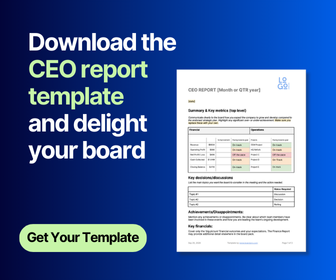How to appoint a better board of governance
Boards that are effective in leading a company and providing strategic direction are made up of strong directors who work together as a team and challenge one another. If your organisation is establishing a new board or looking to fill a place on an existing board, it’s important to consider both the board appointee and the board dynamic as a whole.
Today, employees, customers and shareholders are becoming increasingly discerning about which organisations they support. Appointing new directors to the board gives a great chance to recognise this and establish what good governance looks like for your organisation. It allows you to reaffirm or even redefine what your organisation’s purpose is, identify potential blindspots and get excited about bringing new thoughts and perspectives to the board table.

We spoke to Simon Telfer, managing director of Stimulus NZ, board specialists, and founder of Appoint Better Boards, New Zealand’s largest governance community, about the process of appointing a new director to ensure great boards.
The board appointment panel
When establishing the board appointment panel, make sure it’s diverse in its own right and comprises of individuals who are open to bringing new thoughts and perspectives to the board table, said Telfer. It’s a good idea to have some panel members external to the organisation.
Panelists should be given clear guidelines to work to, and understand the importance of timely and clear candidate communication in maintaining a strong brand.
Learn how to manage your board with board management software
What to consider when starting the board appointment process
Before starting the appointment process, your board should ask itself some tough questions, said Telfer. Start by defining what the board’s priorities are over the next two years. That will help you break down what attributes you might be seeking in a board member. Then ask yourselves how your board defines a successful appointment. What are you hoping will change; what are you seeking to improve?
It’s then a good time to start thinking about how to pitch the opportunity to potential appointees. Why would a busy, capable board member want to join your board? How will they benefit from their committed contribution to the board?
While you’re at it, consider the issues and challenges new board members will need to be aware of and how those will be transparently articulated to candidates.
How to identify the ideal board appointee
Once you’ve identified what a board member needs to bring to the table, now you have to narrow it down and determine what background, skills and experience would contribute to a valuable addition. Find ways to question the person on their thinking, perspectives or life experience that will better inform your decision and whether this person is contributing something new or just echoing current voices around the table.
“What are the individual’s qualities or traits that would add to the board?” said Telfer. “Is there a specific demographic diversity, life experience or voice from the community that would add something to the board?”
Ideally, you want a director who is not only capable of helping your organisation succeed, but who also wants to grow and succeed themselves. “While the key focus is what they can contribute to the organisation, a successful appointment will always have an element of personal or professional extension for that person,” said Telfer.
Board appointees have to be committed to continuous learning and development. Even the most experienced directors are challenged by the pace and complexity of change the world is currently facing.
Ensuring a diverse board
“If you have two people on the board who think the same, you don’t need one of them!” said Telfer. “Diversity of board members brings different thinking, leading to stronger decision making. It also demonstrates to your members that individuals of different backgrounds are welcome in your organisation and have a voice around the top table.”
If your board wants to ensure a diverse board, you’ll first need to identify what diversity means to you. Is it diversity of thought, experience, age, gender or ethnicity? One way to determine that is to look at the employee or customer base.
“For example, if many of your employees or customers are female, but the board comprises only one woman, what message is it sending to people coming up through the organisation?” said Telfer. “What message is it sending to customers and stakeholders?”
Telfer suggests boards have frank and honest conversations about why they are bringing diversity to the board and what they hope to achieve from that. Is it because everyone else is doing it, or are we genuinely addressing blindspots or broadening the thinking around the board table?
Attracting diverse board candidates
Once you’ve reflected on why you are diversifying your board and how that diversity will manifest itself, you’ll need to make it a safe space to attract those candidates. Telfer says to start with the board appointments panel. If your panel isn’t already diverse, you can remedy that by bringing on independent or external members.
When publishing the position brief, run it by a few other people to ensure it’s not unconsciously biased in its language or framed in a way that might exclude certain demographics. In fact, you might be overt and specifically encourage applications from a certain section of the community. This can be done in the wording of the brief itself and in the audience you broadcast your role to, like, for example, board candidate communities such as Appoint Better Boards.
Sell what makes your organisation great
“Good board members don’t need more board appointments, particularly unpaid ones” said Telfer. “So they need to be attracted and inspired and this requires you to sell the sizzle. Highlight the change you are trying to make in the world, the calibre of current board members, the quality of the existing governance process, or some upcoming major events. Failing that, be honest and focus on the challenge!”
Providing fair remuneration for the capability of the individuals, their commitment and the risks they are exposed to is a conversation all boards should have, including those in the not-for-profit sector.
Streamline the application process
If you want to find a good board appointee within a certain timeframe, getting the language right in your application is essential.
“Human nature sees many individuals submit their application on the last day,” said Telfer. “If you choose to advertise, not clearly stating a closing date just prolongs the process and frustrates board members who applied early as they wait to hear the outcome.” Without a specific call to action, you might come across as struggling to fill the vacancy as it appears to remain open indefinitely. Telfer suggests a period of three weeks for positions to remain open.
While you’re at it, ditch the application forms. Most capable people involved in governance are strapped for time, so make the application process as simple and convenient as possible, with few barriers.
“Sure, request that specific questions be addressed in screening questions, but don’t ask for information that is more than likely found on a CV,” said Telfer. “If you would value a cover letter, outline what you would like the letter to address.”
Finally, make sure to give feedback promptly. If you know someone isn’t right, don’t wait until you’ve appointed someone to let them know. Send out that “No” email ASAP. For those you’re unsure about, send out something that lets them know you’re still considering them and need more time.
“Displaying this respect to all applicants creates a lasting brand experience,” said Telfer. “Remember that a candidate who is not right for this role may be a great board appointment fit in subsequent years.”
Where to next?
- Learn how to attract quality board members to your organisation
- Explore webinars and masterclasses on governance best practice
-
If you're looking for a tool to streamline your Board processes, check out BoardPro by scheduling a demo today.
Share this
You May Also Like
These Related Stories

Introducing Simon Telfer - Another governance expert supporting the BoardPro community

Board diversity and inclusion




